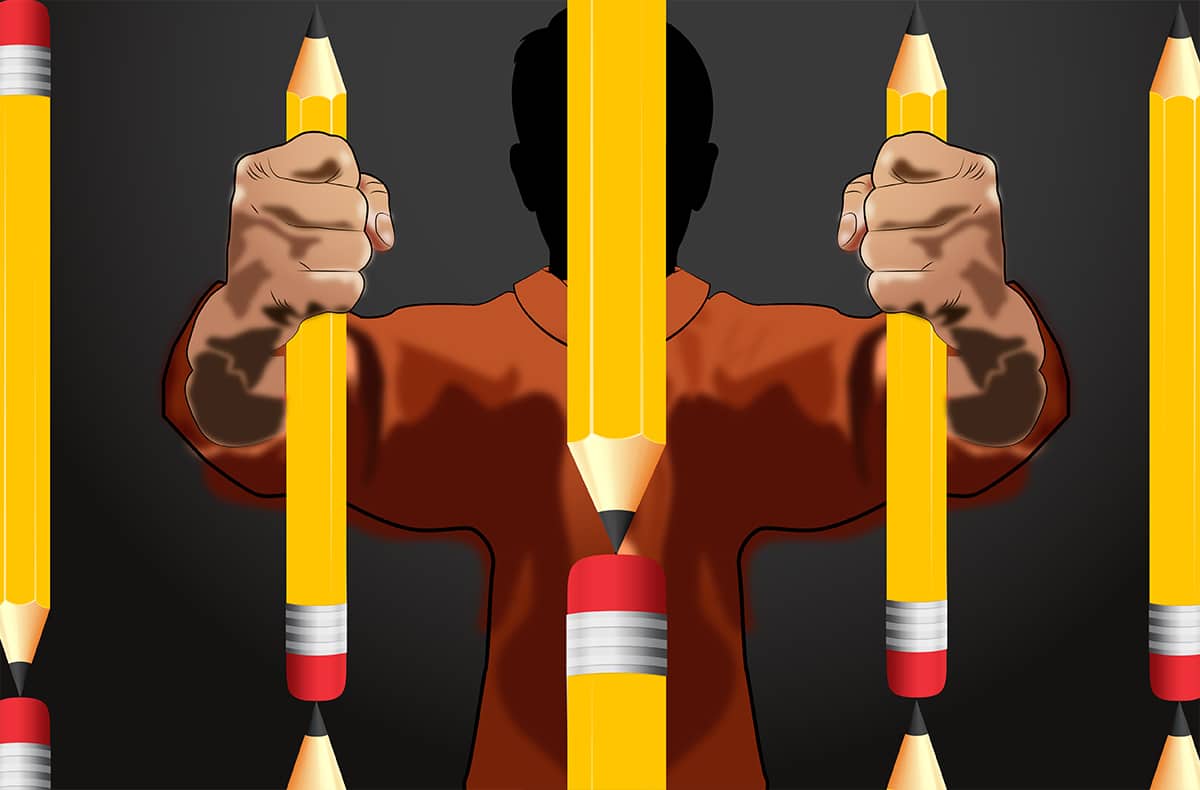
We all want to do well—regardless of who we are or where we come from. No one wants a lifetime of incarceration but the path society offers: “do good in school” in under-resourced institutions that, at their best, are designed for “neurotypical” students, feels like a set up for failure. Especially, when your brain is wired differently.
For the uninitiated, “neurotypical” refers to individuals that display typical neurological development or functioning while the term “neurodivergent” encompasses those with less typical cognitive variations such as Autism, ADHD, dyslexia, dyspraxia, and more. Different brains require different learning strategies.
We hear a lot these days about the “school-to-prison pipeline” and what fuels it. Many point to factors like school disturbance laws, zero-tolerance policies and practices, and an increase in police in schools. According to the American Civil Liberties Union (ACLU), “Many under-resourced schools become pipeline gateways by placing increased reliance on police rather than teachers and administrators to maintain discipline. Growing numbers of districts employ school police officers to patrol school hallways, often with little or no training in working with youth.”
These practices are troubling and cause a lot of pain but they are symptoms of a much deeper, much more foundational problem in the classroom: unaddressed or mishandled learning differences.
When Jamil Howard, a member of Inside Circle serving life at Sierra Conservation Center in Jamestown, California was growing up, he was diagnosed with ADHD. “In school, I was made fun of—I was called stupid, dumb—by kids at school and my parents. Because of that, I became insecure and had low-self esteem. Being called stupid and being in special needs classes, I started to believe it and started acting out in school and not caring about learning or doing my school work.”
In a zero-tolerance atmosphere, it doesn’t take long before kids like Jamil become caught in the criminal justice system without appropriate accommodations and strong advocates. Once in the system, “Prisoners with these disabilities are at greater risk of serving longer, harder sentences and being exploited and abused by prison staff or other incarcerated people” writes Jennifer Sarrett, a scholar and Lecturer at Emory University’s Center for Study of Human Health who has researched disability in prison.
He’s not alone. A recent white paper published by the non-profit group RespectAbility, reported findings from a 2005 national survey showing that 36% of students in the juvenile justice system had learning disabilities. For reference, the national average is about 10%.
The ACLU estimates that on any given day 60,000 youth are incarcerated in the United States. This equates to about 21,600 neurodivergent kids. Based on a study by Joseph Doyle, a researcher at the Massachusetts Institute for Technology roughly 40%, or at least 8,640 of these kids will end up serving time in an adult prison. Now, States vary a lot in the cost to incarcerate one inmate for a year—in Alabama the average cost is $14,780 per inmate while in California it’s $106,000. So, using a national average of $60,350 and the average prison term of 147 months, we can estimate that it costs about $739,288 to incarcerate one person for the average term. When you add it up, that’s about a $6.4 billion-dollar problem—not including the adjudications costs or the emotional and property costs to the community.
Some things work to help keep differently wired kids in school where, if they can graduate high school, their outcomes improve dramatically.
It starts early with an inclusive classroom culture that embraces and respects neurodiversity, provides accommodations, focuses on strengths, positive discipline, project based learning, mindfulness training and more professional development for teachers overall. These measures improve outcomes for all students and pay dividends later in the form of higher wages and tax revenue.
The latest census reported that the national spending average per pupil is $13,187. That’s significantly less than the cost to incarcerate an adult and much less than the opportunity cost we suffer when kids don’t reach their full earning potential.
So we can pay now, or we can pay later, but it costs more to delay. Ever heard the old adage, “an ounce of prevention is worth a pound of cure?”
It might be time to listen.
Meanwhile, now 39 and just over 20 years into his life sentence, Jamil is stuck in a system that doesn’t recognize or accommodate his special needs. He says, “I’m holding out hope that one day I will have a second chance at life and be the man I know I can be…I have been to three parole board hearings and I have an issue articulating myself and expressing my thoughts and feelings in a board setting.”
I hope so, too.

